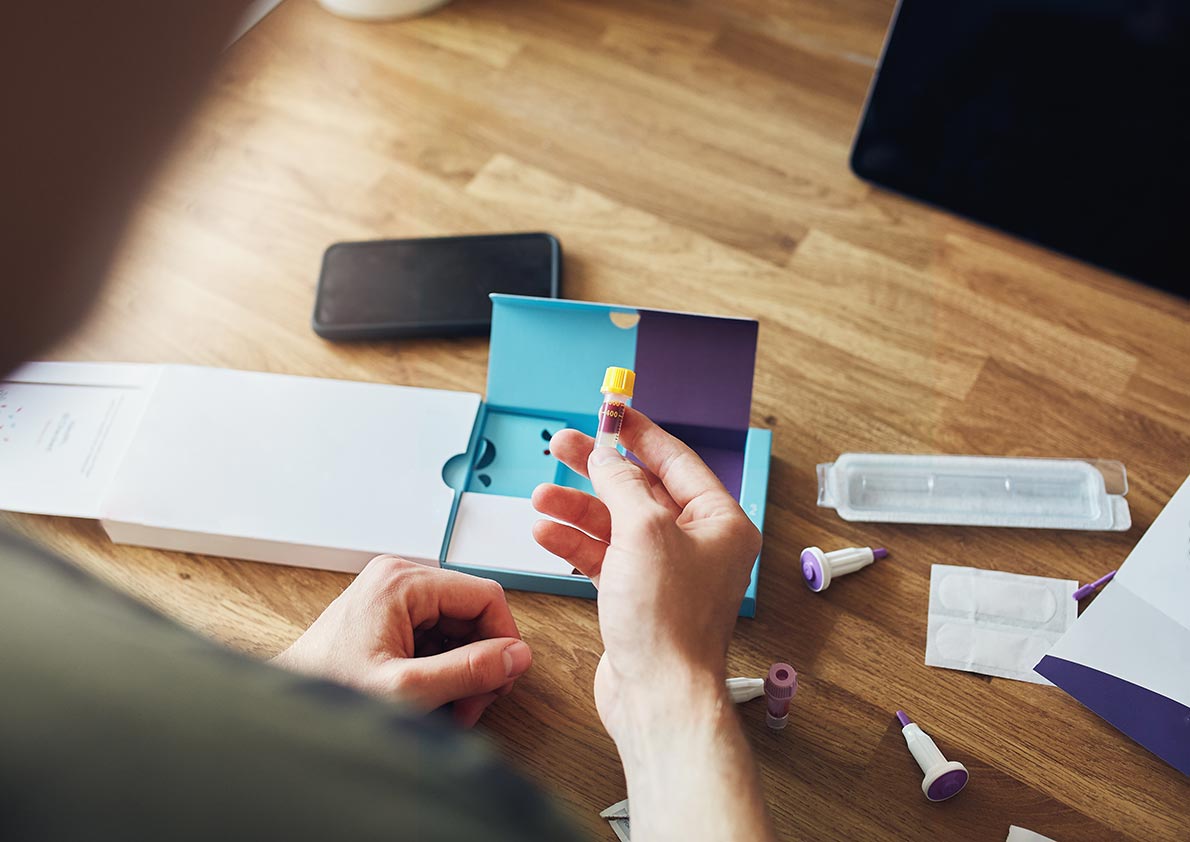That low sex drive you’re experiencing may not just be a symptom of aging.
Yes, we all experience times of low libido, fatigue, and not feeling our best.
But if you’re experiencing these along with other symptoms, get your testosterone checked. You could be experiencing hypogonadism, otherwise known as low testosterone.
Low testosterone might make you feel like “less of a man” and cause feelings of shame or embarrassment. In reality, it’s a normal medical condition with dozens of treatment options available. Feeling shame may be why, in large part, many men put off seeking treatment for it.
But you shouldn’t feel shame and you definitely shouldn’t feel alone.
An estimated 1 in 4 men lives with low testosterone because they don’t seek treatment.
When hypogonadal males get diagnosed and treated, symptoms and quality of life improve. That’s why it’s important to seek medical help.
Continue reading as we explore more about hypogonadism and what treatment might be best for you.
What Is Testosterone?
Testosterone is defined as a steroid hormone secreted by the testes in males. Its job is to stimulate the development of male sex organs, secondary sexual traits, and sperm.
Testosterone levels increase during puberty and decline throughout adulthood and into old age. In fact, it’s completely natural for levels of testosterone to decline as a man ages.
If you’re experiencing symptoms and you’re older than 60, you may simply be going through what’s called “male menopause”.
However, it could also be caused by an underlying problem in the testes or in the brain.
Why Do We Need Testosterone and What Happens When It’s Low?
Testosterone is a key element to the male physiology and does a lot of important things throughout puberty and adulthood.
Testosterone is in charge of determining sex in fetal development. During puberty, testosterone’s effects on the male body are the most prevalent. These include increased body odor, hair growth, increased libido, and deepening of the voice, among others.
In adults, testosterone’s effects take place in the form of libido, penile erections, aggression, and muscle tone.
Low testosterone is defined as being 300nb/dL of total testosterone. This is a result of a male sex hormone deficiency disorder.
Alternative names for this condition include testosterone deficiency syndrome, or simply “low testosterone”.
When testosterone levels drop, there are a few things that occur that produce symptoms and some that do not.
The symptoms of low testosterone depend on the timeline at which hypogonadism appears. These symptoms can be from severe, like genital abnormalities at birth and infertility. They can be more ambiguous like a decrease in body hair growth and loss of bone and muscle mass.
Additionally, hypogonadism has effects on emotional well-being. One may feel fatigued, have a decreased sex drive and experience difficulty concentrating on tasks.
What Causes Hypogonadism?
To understand why an individual experiences a low level of testosterone, we must first explore the two main types of hypogonadism.
Primary Hypogonadism
This type of hypogonadism involves the direct testosterone production originating in the testes.
With this type, your gonads are still receiving information from your brain telling them to produce testosterone. For one reason or another, however, the gonads cannot produce it.
Conditions that might compromise the testes are general inflammation, chemotherapy, autoimmune disorders, or a physical problem. A common physical problem is a failure for the testes to descend into the scrotum during puberty.
Klinefelter’s Syndrome is one of the most common causes of primary hypogonadism and is defined as a chromosomal disorder in males. In a normal male child at birth, there will be an XY chromosome present. In males with Klinefelter’s, there exists a second X chromosome.
This second chromosome alters the ability of the body to fully develop as male during childhood. It is especially felt during puberty with lasting effects into adulthood.
Secondary Hypogonadism
The second type originates from a problem in the brain. This can be either in the pituitary gland or the hypothalamus.
Hypopituitarism can sometimes directly cause the secondary type. This is underperformance of your pituitary gland in the body in general.
The hypothalamus in the brain produces a gonadotropin-releasing hormone. This then signals the pituitary gland to produce follicle stimulating hormone (FSH) and luteinizing hormone (LH).
In this condition, the testes are functioning normally and the problems originate in the brain.
A number of factors can trigger secondary hypogonadism. These include HIV/AIDS, opiate pain medication usage, obesity, diabetes, and even stress.
Both types can be inherited congenitally or acquired by outside factors.
How Common Are Hypogonadal Males?
While hypogonadism can show onset at any age, it is more common when a man is higher in age. This is because the testosterone levels naturally drop during one’s lifetime.
This drop can trigger testosterone levels that are too low.
The latest estimates state that hypogonadism affects between 4 to 5 million men in the United States alone. Even still, a large percentage of hypogonadism cases go undiagnosed and undertreated.
How Can You Test For Hypogonadism?
If you suspect you have hypogonadism, schedule a visit with your doctor. Early detection is the key to successful treatment. If caught before puberty, many of the unwanted effects can be drastically reduced.
Even as an adult, it’s important to test and get treatment for hypogonadism to prevent unwanted side effects. These include osteoporosis, decreased libido, erectile dysfunction, depression, and more.
You’ll likely be given an Androgen Deficiency in Aging Male (ADAM) test to determine if you have this disorder. This test is done in the morning to assess total testosterone serum count when testosterone levels are at their highest for the day.
A result of <300 ng/dL (10.4 nmol/L) confirms a diagnosis for hypogonadism.
You’re Diagnosed With Hypogonadism. What’s Next?
It’s important to remember that hypogonadism is a highly treatable disease.
If left untreated, it can lead to complications like cardiovascular disease, osteoporosis, depression, and even Alzheimer’s Disease. So, it’s best to get tested.
Treating hypogonadism depends on the type you have and what symptoms you are looking to alleviate through treatment. There are two main avenues for hypogonadal treatment for most men depending on its cause:
Gonadotrophin therapy
This type of therapy involves treatment with hormones. These hormones stimulate reproductive organs. This is the go-to treatment for those with secondary hypogonadism.
This type of treatment has been shown to improve fertility rates over time.
Testosterone replacement therapy (TNT)
Doctors use this type of therapy in men who have hypogonadism that is not associated with age or illness or have primary hypogonadism.
TNT therapy may help with wellbeing, sexual function, and physical symptoms.
Furthermore, this treatment has been linked to increased sex drive, reduced body fat, increased bone density, and mood improvement.
Using HCG For Gonadotrophin Therapy
HCG, or Human Chorionic Gonadotropin, is a hormone that is commonly used for pregnancy.
However, there’s been new research in recent years that shows some significant benefits for hypogonadism as well.
Doctors noticed increased sexual function in men with hypogonadism that start on HCG therapy.
This is because of something we call Luteinizing Hormone (LH). The pituitary gland in the brain handles creating LH. The role of this hormone in the body is to trigger reproductive organs to do their jobs properly.
In men, LH triggers the production of a healthy level of testosterone from Leydig cells in the testes. The main symptom of low LH is sexual reproductive dysfunction, which leads to infertility.
HCG hormone is effective at replacing LH to trigger testosterone because of its shape mimicking that of LH at a microscopic level.
HCG treatment is available through an FDA-approved injection. It’s so simple, you can usually administer it yourself at home.
You may notice several improvements to the symptoms of hypogonadism on this therapy. The most common improvements are descending testes, erectile dysfunction reversal, and increased energy.
How To Treat Hypogonadism With TNT
There is another hormone replacement therapy used for primary hypogonadism. This therapy, called TNT (or Total Neoadjuvant Therapy) focuses on testosterone.
Once your doctor prescribes TNT, you’ll need to go about the tricky process of dosing. You’ll work with an endocrinologist to find the right dose and administration method for you.
Just like we all have different tolerances for alcohol and prescription drugs, every man will need to find what dose is right for him. This has to do with differing metabolic rates across individuals.
If you’ve started on TNT and aren’t noticing your symptoms improve, it can be frustrating. Being upfront with your doctor about your signs and symptoms is essential for success. This is especially crucial when first embarking on a TNT therapy regimen.
There are many different ways that testosterone can be delivered to your body. One method might work better for you than another. Here are the main ways:
1. Oral Testosterone: A patient takes a pill via the oral route. The downside to this method is the increased burden to your liver over a long period of time.
2. Pellet Medication: This method brings testosterone into your bloodstream via the muscle tissue.
Tiny beads are inserted into the muscles through a small incision and absorbed by the body. These have a 3-6 month life, and so you may experience an unwanted excess of testosterone.
3. Gels + Topical Creams: This method involves massaging topical gel or cream onto your skin. The testosterone present in the cream is then absorbed. This is a quick and easy way of getting testosterone into your system, but there are some drawbacks.
Because everyone metabolizes medications differently, one may not know how fast or how efficiently the hormone is being absorbed. It’s estimated that at times, only 25% of the medication may be absorbed via this route of treatment.
4. Injections: This is the current gold standard for TNT. It’s the safest and most guaranteed ways of getting testosterone into the body.
Injections are usually given once a week with effective treatment results. It’s important to note that the effects of TNT are not instantaneous. It can be anywhere from a few weeks to 15 weeks before any symptoms begin to meaningfully shift.
What Are The Long-Term Implications Of Hypogonadism?
Even though hypogonadism is a very treatable condition, there are still some long-term risks associated with it. This becomes especially true if you forego treatment.
One common side effect of hypogonadism, diagnosed or not, is depression. This stems from the inability to reproduce, erectile dysfunction, and/or a lack of a sex drive.
Professional counseling can help with depression. TNT or HCG therapy will often ease these primary depression-causing symptoms in men with hypogonadism.
Additionally, hypogonadism can increase your risk of heart disease. This is due to testosterone’s important role in keeping cholesterol under control. Low testosterone levels have been linked to higher cholesterol.
In fact, those who have acquired their hypogonadism (non-genetic) need to pay special attention to their overall health.
Maintaining a normal BMI, limited alcohol and drug use, and living a healthy lifestyle can prevent hypogonadism in the first place.
Where Can You Get More Info?
Hypogonadism affects men of all ages and should not be something to feel shame about when seeking medical attention for it. Hypogonadism can be caused by a wide variety of things both congenital and acquired.
There is ongoing research into how doctors can better identify and accurately treat hypogonadism. This will help get patients of all ages the treatment that they need to reverse symptoms and prevent long-term complications.
For more educational resources, tips, and treatment options for hypogonadal males visit our blog! You can also find TNT treatment centers in your area.



